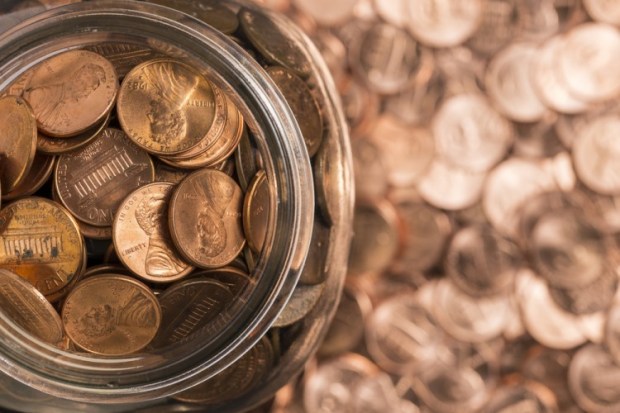Take It Or Leave It? Consumers Weigh In On The Penny

The next time you offer someone a penny for their thoughts, step back and rethink your meager offer of copper. Nobody wants your penny – or do they?
The Harris Poll released Tuesday (Sept. 22) finds that a majority of Americans (using a sample of nearly 2,300 adults queried in July) do not want to abolish the lowly one-center, with some sort of fondness for copper firmly in place. Maybe because there’s, well, so many of them around. Proponents for the cent’s end complain that they actually cost more to make than they are worth. And how many times do you leave your two or three (or 10) pennies in the “give one, take one” cups at the local deli or 7-Eleven? On an even bigger scale, in 2014, the TSA collected almost $675,000 in pocket change and those passengers likely didn’t flinch while forking over their silver and copper. There’s a sort of disrespect for the coin that bears the visage of one of America’s greatest presidents.
Still, the latest poll numbers let respondents offer up their two cents: 51 percent of people oppose giving up the penny, 29 percent are for the phase out. Those numbers show less support for keeping the change than had been seen in 2008, when 56 percent polled by Harris supported the penny and only 24 percent had been against keeping it around.
Drilling down a bit, though the majority of people would favor keeping the penny, there are some subsets of people who like idea of abolition. That would include men, who favor the idea of abolishing, at 39 percent versus only 20 percent of women.
And as might be expected, those with higher incomes – as many as 44 percent of those with households earning at least $100,000 think doing away with cents makes sense. Lower income respondents want to hang onto their pennies, with support for ending the penny at a relatively paltry 19 percent among those earning less than $35,000 annually. The richer people would rather see a dollar coin.
And speaking of dollars: An overwhelming majority of Americans (80 percent) would rather have their dollars in paper form rather than as a coin clanking in a pocket – a bit higher than the 76 percent seen in 2008. Again drilling down a bit, there are some aberrations among subsets: Men would prefer to see a dollar in coinage, at 19 percent vs. 7 percent of women. And those who live in urban areas, at 17 percent, are more enthused about a dollar coin, than say, their suburban brethren at 12 percent.
So for now, it seems, the change will be spared. The days of specials that boast a steal at 99 cents, or $19.99 or $199.99 on everything from fast food burgers to stereos geared to give you a psychological boost that you are saving something are still with us.
That means no round numbers, and possibly, with the affection for tangible coins and paper dollars, the movement toward a total electronics payments system may take a long time to be realized. The honest debate over Honest Abe rages on — right alongside the ongoing debate over the transformation of the $10 bill.
